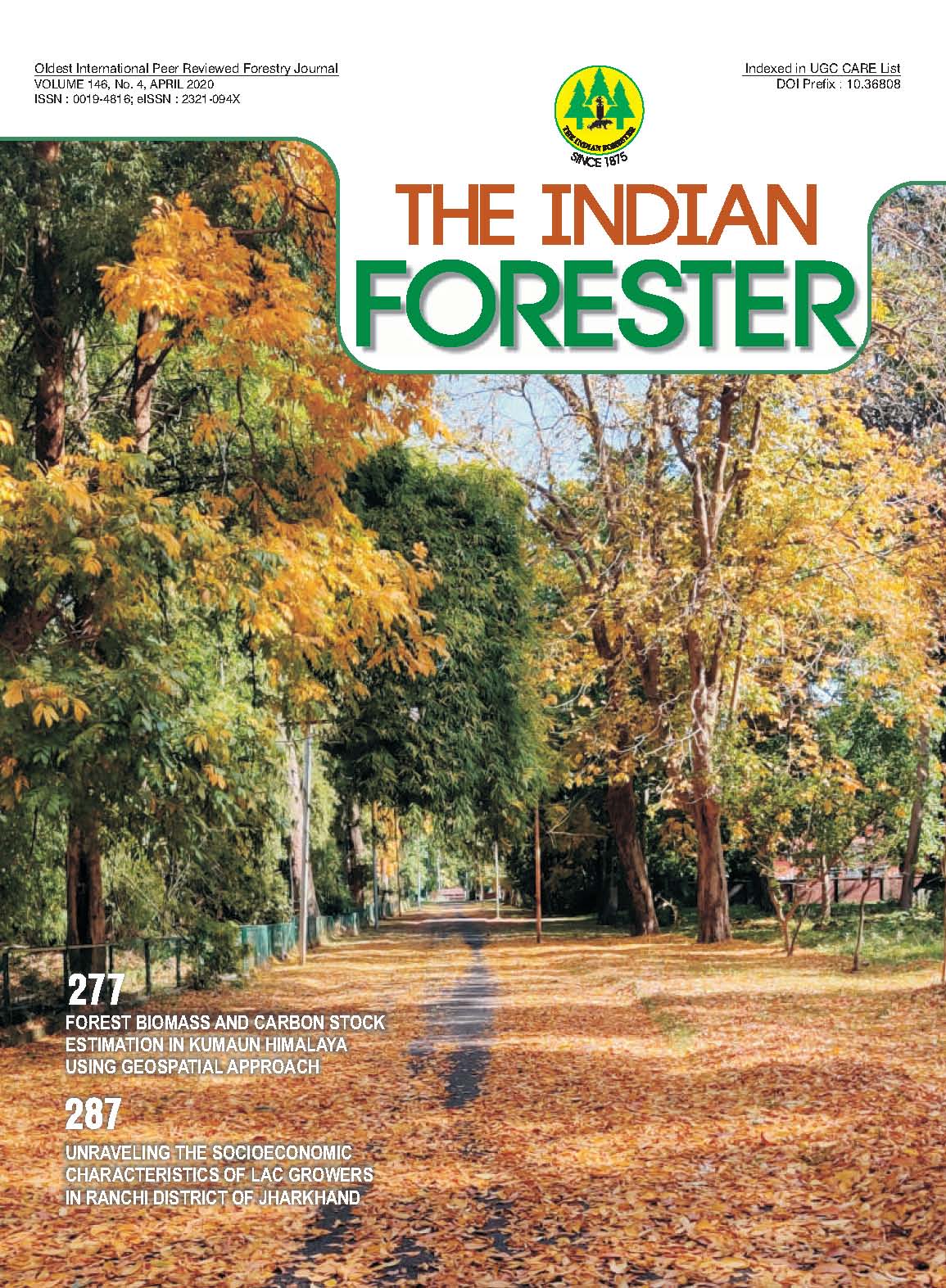Distribution, Quantification and Selection of Superior Quality Germplasms of Oroxylum indicum (L.) Kurz (Shyonak) in Different Forest Divisions of Uttar Pradesh
DOI:
https://doi.org/10.36808/if/2020/v146i4/145515Keywords:
Germplasm, Oroxylin-A, Bignoniaceae, Distribution, Oroxylum indicum and Endangered.Abstract
Oroxylum indicum, an important medicinal native plant (family Bignoniaceae) is distributed throughout the country up to an altitude of 1200 m and found mainly in ravine and moist places in the forests. The species was once distributed throughout the great parts of India but now it is listed amongst endangered species in many areas of the country. An attempt has been made to survey the medicinal plant species in its natural habitat in the state of Uttar Pradesh; mapping of the germplasm distribution and to select the superior quality germplasms by analysis of its active constituents. The survey of plants of O. indicum was carried out during the DST sponsor project period April, 2016 to March, 2018 in elevation between 62 m. amsl to 660 m. amsl. A total of 46 locations were explored in different forest divisions (10). And occurrence of the species was found in 17 locations. The maximum average population per km was found in Behraich Forest Division. On the basis of analysis of active constituents per cent i.e. Chrysin, Baicalein, Oroxylin-A, Six samples (numbered 19, 17, 14, 12, 9 and 18) were found better and therefore screened out from the 15 samples; which will be recommended for further conservation and multiplication in Uttar PradeshReferences
Ali R.M., Houghtio P.J. and Hoult J.R.S. (1998). Antimicrobial and antiflammatory activities of extracts and constituent of Oroxylum indicum (L) Vent. Phytomedicine, 5, 375-381.
Darshan S. and Ved D.K. (2003). A balanced perspective for management of Indian Medicinal Plants. Ind. For, pp. 275-288.
Jayaram K. and Prasad M.N.V. (2008). Genetic diversity in Oroxylum indicum 1-1 (L.) Vent. (Bignoniaceae), a vulnerable medicinal plant by random amplified polymorphic DNA marker. African Journal of Biotechnology. 5 February, Vol. 7 (3): 254-262.
Rastogi R.P and Mehrotra B.N. (1998). Compendium of Indian Medicinal Plants, Central Drug Research Institute. Lucknowand Publications and Information Directorate, New Delhi, Vol. 5, pp. 589.
Rao J.M., Katragadda S.B., Tatipaka H.B., Khanapur M.. Purohit M.G., Pullela VS. and Yadav J.S. (2007). Natural agent for treatment of gastrointestinal toxicity, associated symptoms and ulcers. pp. 1-20.
Sankara S. and Nair A.G.R (1972 A). Flavonoids of stem bark of Oroxylum indicum. Current Science; 41: 62-63.
Sankar S., NairA.G.R (1972 B). Flavonoids from the leaves of Oroxylum indicum and Pajanelia longifolia. Phytochemistry 11: 439-440.
State of Forest Report (2017). Forest Survey of India (Ministry of Environment & Forests) Kaulagarh Road, PO IPE. Dehradun-248195.
Downloads
Downloads
Published
How to Cite
Issue
Section
License
Unless otherwise stated, copyright or similar rights in all materials presented on the site, including graphical images, are owned by Indian Forester.





